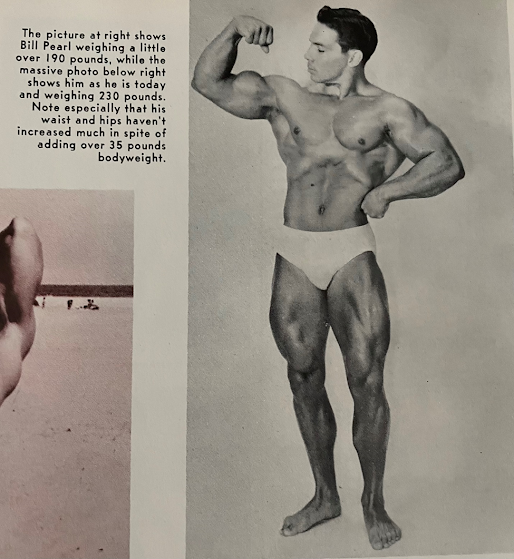MILO January 1996
Thanks to Howard Menkes for providing this article. Howard also happens to be mentioned in the article as well!
Years ago, we used to celebrate Memorial Day with a barbecue
and a day of strength work at Ralph Raiola’s house. Since the opening of the
Iron Island Gym, this has been impossible. Memorial Day weekend has been the
date for the annual Iron Island Memorial Day Bench Blast, a contest that has
seen quite a few world records, including the smashing of the 400-pound barrier
for the first time by a woman lifter. Tamara Grimwood, the fine athlete who
accomplished that feat with a 402.25, Chris Confessore, and others have made
our Memorial Day meets memorable, but Ralph missed those eating and lifting
fests that left everyone talking for weeks about the great time they had.
With little fanfare and great glee, Ralph and Michele hosted
a Labor Day bash, complete with lots of food, lots of beverage, and lots of
lifting, reminiscent of the Labors of Hercules. A great time was had by all.
With the gym open until 3 P.M. and the lifting starting at 4 P.M., some of the
competitors were put at an immediate disadvantage as they opted to eat first
and lift afterwards. Frank De Marco, a formidable opponent in pasts contests,
had to pass on the first event as he faced the choice of either filling his
hands with the heavy log or the four hot dogs he was holding. He wisely chose
the hot dogs, giving him, as he later explained, “Lots of energy for later
events.” In the spirit of friendly competition, Ralph’s intricate system of
scoring broke down early, leaving all exhausted, satisfied with their efforts,
and having little or no idea about their placings. This is typical of the
fun-filled times we often have related to strength training, with the only
complaints related to the degree of seasoning in the homemade sausage.
Our events consisted of maximal repetitions in the overhead
press with our heavy log. I originally made this log in the mid-eighties when
the head of Lilco’s tree trimming crew (our local power utility) exchanged it
for chiropractic services. I’m probably the only health care professional to
barter services for a log, and walked away feeling that I got the better of the
deal. I machined and secured parallel grip handles in this and a lighter log,
but never bothered to weigh either one. The very powerful Tom Metzger and I
tied in this event, although I deserved no share of that title as I knew what I
needed to win, took two attempts to push the winning press to completion, and
failed both times, scraping my chin in the process.
Ralph proved tough in the second event, and by this time,
some of the neighborhood children had joined the throng on the sidewalk and
lawn of the Raiola residence to witness the bizarre happenings. I bought brand
new perfectly matched sledge hammers a few days before, and these were held in
abduction for time. Frank’s four hot dogs had digested enough for him to smoke
everyone else. Special mention should be made of Jackie Metzger’s performance
as her delts stood out in bold relief, prompting our cameraman John Mahon to
shoot half of his roll of film on this one event. To compensate for the sake of
fairness, the women, and only young competitor, my son Sol, lifted our short
thick bar with weights instead of the heavy log, and held out huge plastic jugs
filled with water. Sol needs special mention as he eschewed the bottles for the
big guys’ hammers.
Our third event was one of Ralph’s favorites, but Vinnie Borgia and big Howard Menkes surprised everyone with blistering times. Ralph made a very nice sled in his wood shop and loaded it with plates. Metzger fulfilled his request to bring a “thick rope” that could be used for a hand-over-hand pull up the driveway. Tom, of course, came through with a rope that in and of itself weighed over two hundred pounds! Now we know what our local clammers have to deal with on a daily basis. We “older competitors” were blown out after the pressing and hand-over-hand sled pull. The younger guys seemed to gain solace and rejuvenation from the between-events beer. How do they do that?
Here is the aforementioned Howard Menkes pulling a 1160
lbs anchor chain
Our final event was by far my favorite. Jim Sutherland is
perhaps the most brilliant manufacturer of strength training equipment in the
country. No one can understand what a trainee’s needs are and then render the
product so skillfully. I had two old Navy practice bombs that when filled with
sand or water, weighted approximately one hundred pounds. Filling and refilling
it was a pain- messy, and at times, difficult. I originally bought these from
Archie McPhee’s weird product outlet in Seattle and then sent them to Jim for
retooling. He welded beautifully knurled handles, filled them with melted lead
and put a base on them so that they would not get crushed when dropped. We
wound up with these great 125-pound carrying implements that are extremely well
balanced. Thank you, Jim.
These were lifted from the ground, with the competitor
springing twenty yards up the driveway to the start of Ralph’s back yard. Once
on the dirt and grass, five quick deadlifts were done, all of it timed. The
ladies used one of our fifty-pound elevator counterweights in each hand. My
wife’s triceps and delts were popping out as she used her former Purdue
University top sprinter’s speed, but it was her butt, traps and low back that
were screaming in the days following the run.
We eventually gave up trying to figure out placings and
settled on recovering from our efforts, eating and drinking until late in the
evening; and thinking about next year’s events and what other things we could
do to have fun with our strength. This is what strength is all about. This is
what MILO is all about.
Competitors: Vinnia Borgia, Frank DeMarco, Howard Menkes,
Kathy Leistner, Jackie Metzger, Diane Oates, Drew Israel, Tom Metzger, Sol
Leistner, Ralph Raiola, Dr. Ken Leistner.
Referees and Timekeepers: John Bott, Marie Bott, Mark
Tuesday
















